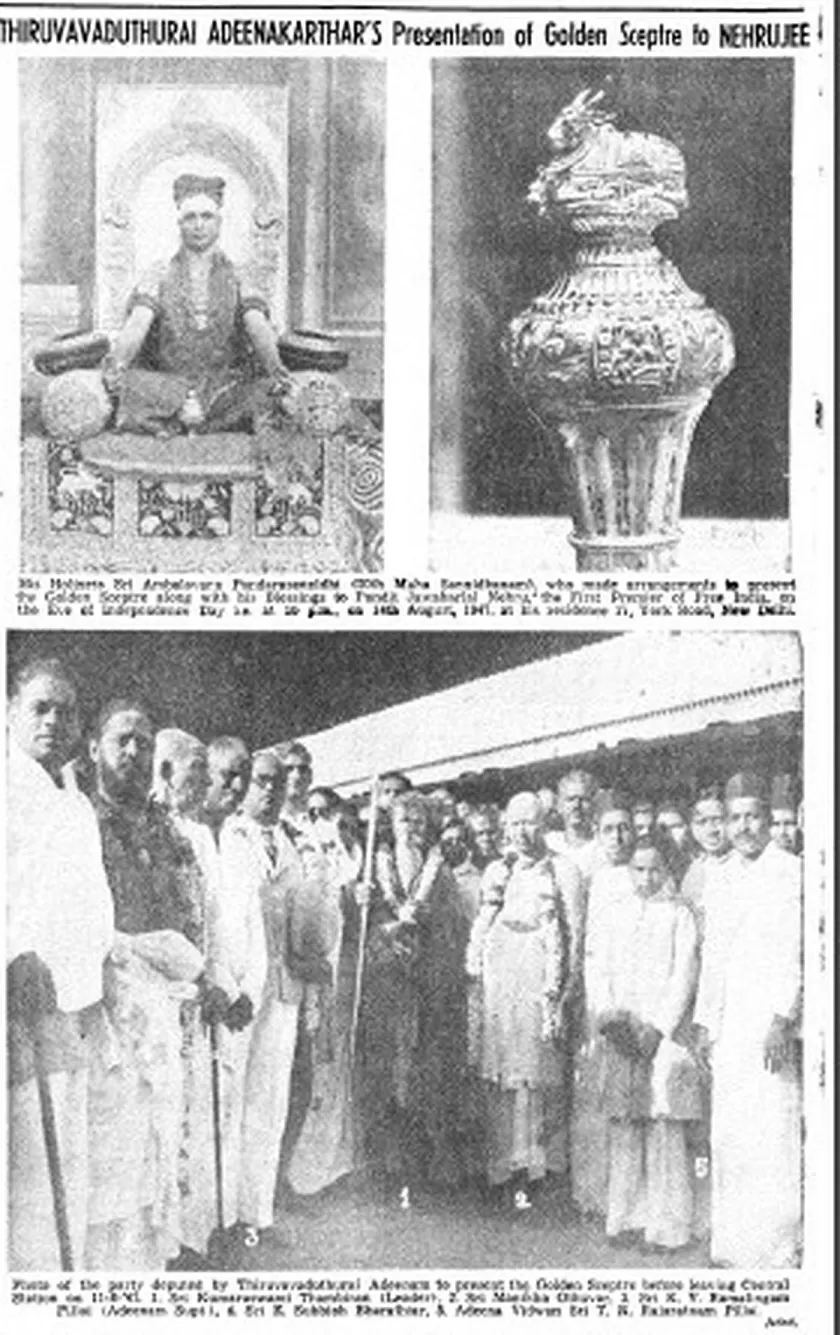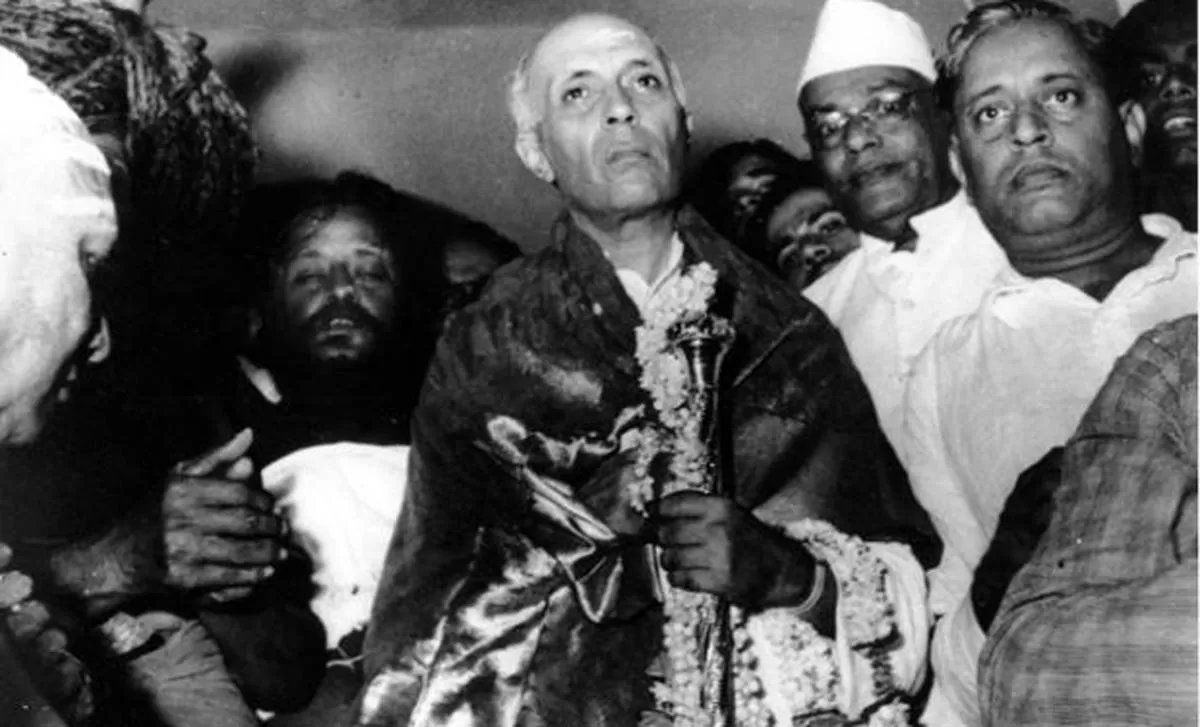India: Inspired by the Cholas, handed on to Nehru: famous 'Sengol' to be put in new Parliament building
The "Sengol," which India's first prime minister Jawaharlal Nehru received in 1947 to symbolise the handover of sovereignty from the British and is currently on display at an Allahabad museum, will be placed in the new Parliament building.
"We want India's citizens to watch this and understand about this important occasion. Everyone should be proud of it, Mr. Shah added.

Rajaji's proposal for a Chola-era ceremony
When India gained independence from the British, the Viceroy at the time, Lord Mountbatten, asked Jawaharlal Nehru, who would later become Prime Minister, "What is the ceremony that should be followed to symbolise the transfer of power from British to Indian hands?"
Nehru next sought advice from C. Rajagopalachari, often known as Rajaji, who later served as India's final viceroy. Rajaji pointed out the Chola approach, in which a great ruler sanctified and consecrated the handover of authority from one monarch to another. The passing of the "sengol," or sceptre, from one monarch to his successor, served as the emblem.
Vummidi Bangaru Chetty, a renowned goldsmith in the Madras Presidency, created a golden sceptre. Vummidi Ethirajulu (96) and Vummidi Sudhakar (88) are the creators of the sengol, and they reside in Chennai.
The ritual of "handing over" that took place on the eve of Independence Day
The deputy high priest of the 500-year-old Saivite monastery Thiruvavaduthurai Adheenam, Nagaswaram musician Rajarathinam Pillai, and an Odhuvar (someone who performs devotional songs in Tamil temples) were transported to the capital from the erstwhile Madras Presidency on August 14, 1947.
The ceremony was held in accordance with Tamil customs, and Nehru received the sengol at his home.
The Hindu Religious and Charitable Endowment Board, Government of Tamil Nadu, recently remembered the occurrence in a policy note.
NEHRU WILL RECEIVE A SCEPTRE
MADRAS, AUGUST 10: In conjunction with the commemoration of Independence Day, His Holiness Sri-la-Sri Ambalavana Pandarasannadhi of Tiruvaduthurai has scheduled a special puja to Shiva and a blessing ceremony for Pandit Jawaharlal Nehru. On August 14, at 11 p.m., Pandit Nehru will receive the puja prasadams and a gold sceptre at his home in New Delhi. The jeweller and diamond merchants of the Citv, Vummidi Bangaru Chetti and Sons, produced the gold sceptre.

Printed in The Hindu on August 11, 1947
Mr. Shah observed that the transfer of power requires more than just a handshake or the signing of a paper and that it must maintain ties to regional customs while taking current demands into consideration. Jawaharlal Nehru felt the same way on August 14, 1947, and Sengol "represents that feeling," he remarked.
"Most Indians are unaware of this event even after 75 years of independence," Mr. Shah continued. Jawaharlal Nehru was presented with the Sengol on this night (August 14, 1947) by the Adheenams (Priests) of the Thiruvaduthurai Adheenam (Mutt) in Tamil Nadu, who had travelled especially for the event. It was precisely at that time when the British handed control over to the Indians, the minister claimed.
For the dedication of the new Parliament building, all 20 Adheenams are invited.
"The presidents of Adheenam were consulted in the preparation of this historic plan. On this momentous day, all 20 Adheenam presidents would also be there to offer their blessings in remembrance of this ancient tradition. Vummidi Bangaru Chetty ji, who was involved in its establishment and is 96 years old, will take part in this holy ritual, and I'm delighted about that," Mr. Shah remarked.
The 24th and current seer of Thiruvavaduthurai Adheenam, Sri La Sri Ambalavana Desika Paramacharya Swamigal, expressed satisfaction over Mr. Shah's declaration and said that, as a symbolic gesture, the sceptre will be given to Mr. Modi on the day of the new Parliament building's opening.
The new Parliament building, according to the home minister, is an illustration of Prime Minister Narendra Modi's foresight. At the inauguration, he claimed, the prime minister would recognise 40,000 workers.
Regarding the boycott by the opposition
Mr Shah said that all political parties received invitations to the inauguration of the new Parliament building and were allowed to respond in accordance with their best judgement when asked about opposition parties skipping the ceremony. The occasion shouldn't be politicised; rather, it serves as a reminder that government should be reasonable and equitable. People respond and behave in accordance with their ability, he said.
Kishan Reddy, the Union Minister for Culture and Tourism, Anurag Singh Thakur, the Union Minister for Information and Broadcasting, and Govind Mohan, the Secretary for the Ministry of Culture, were also present.
